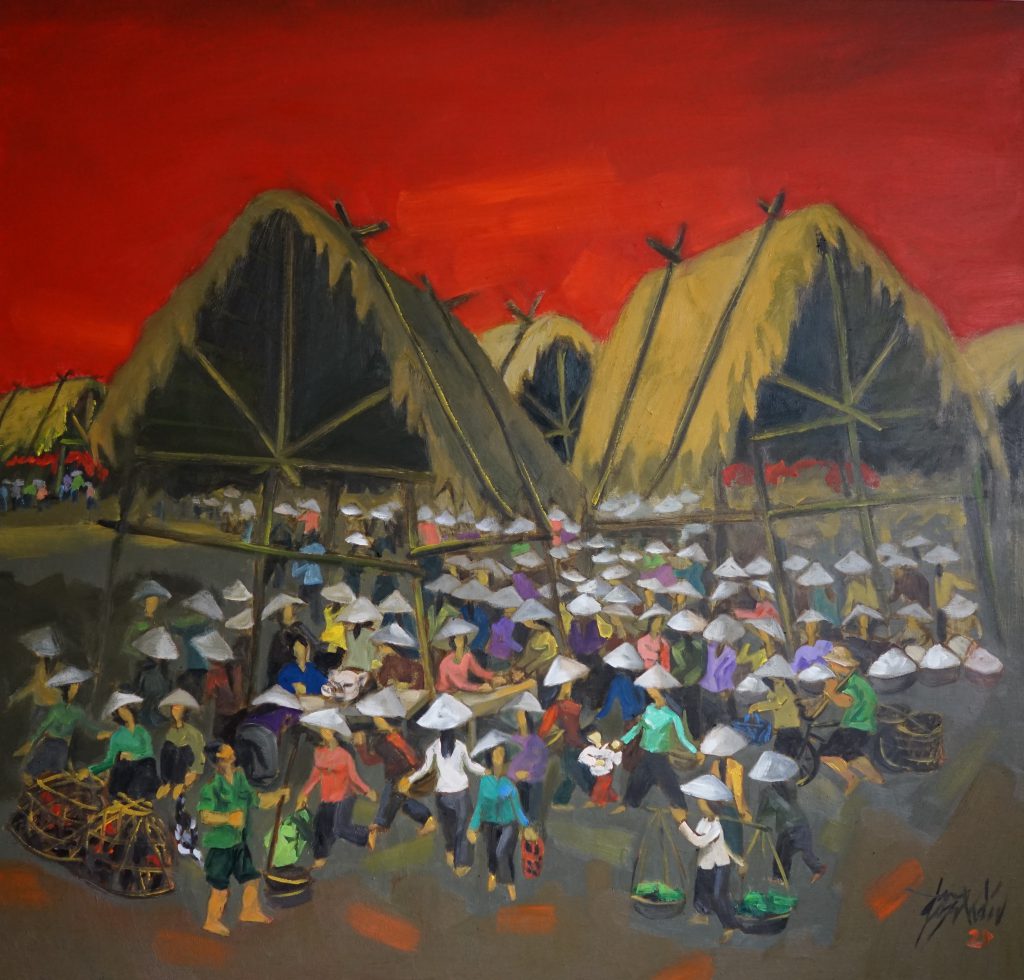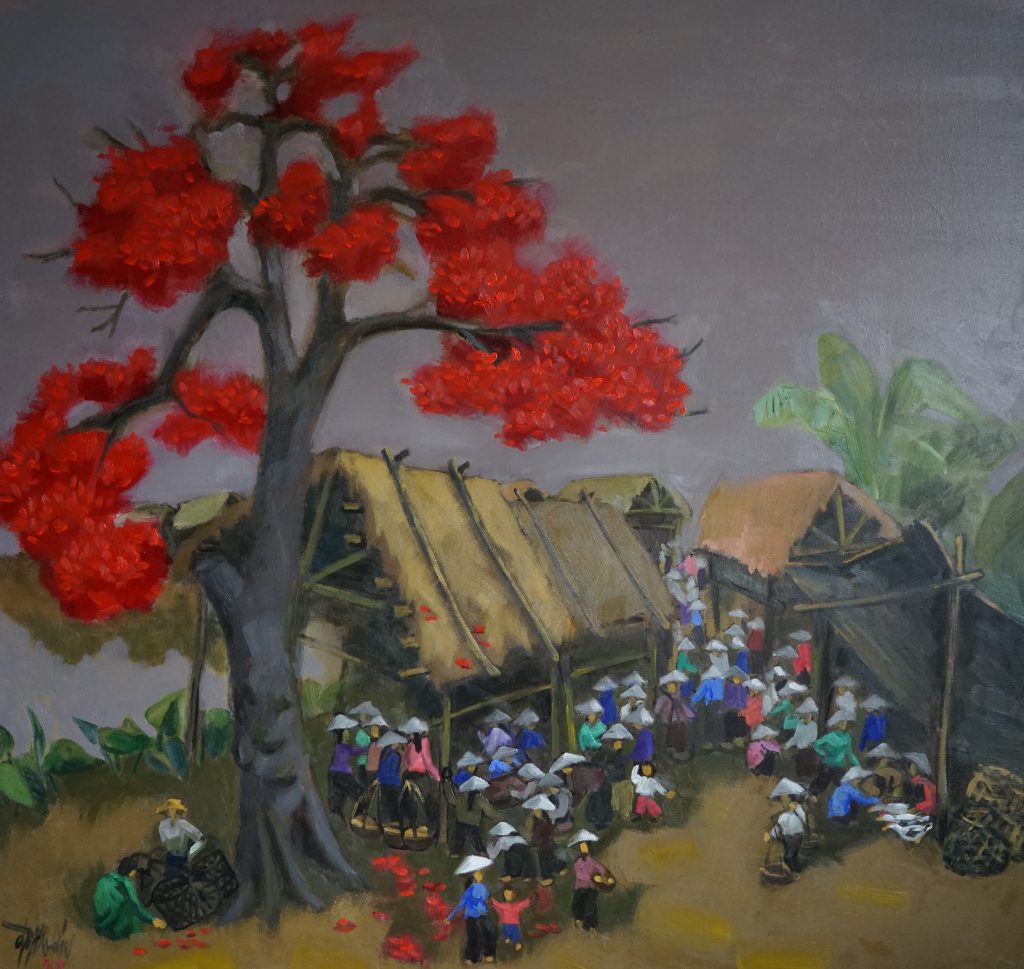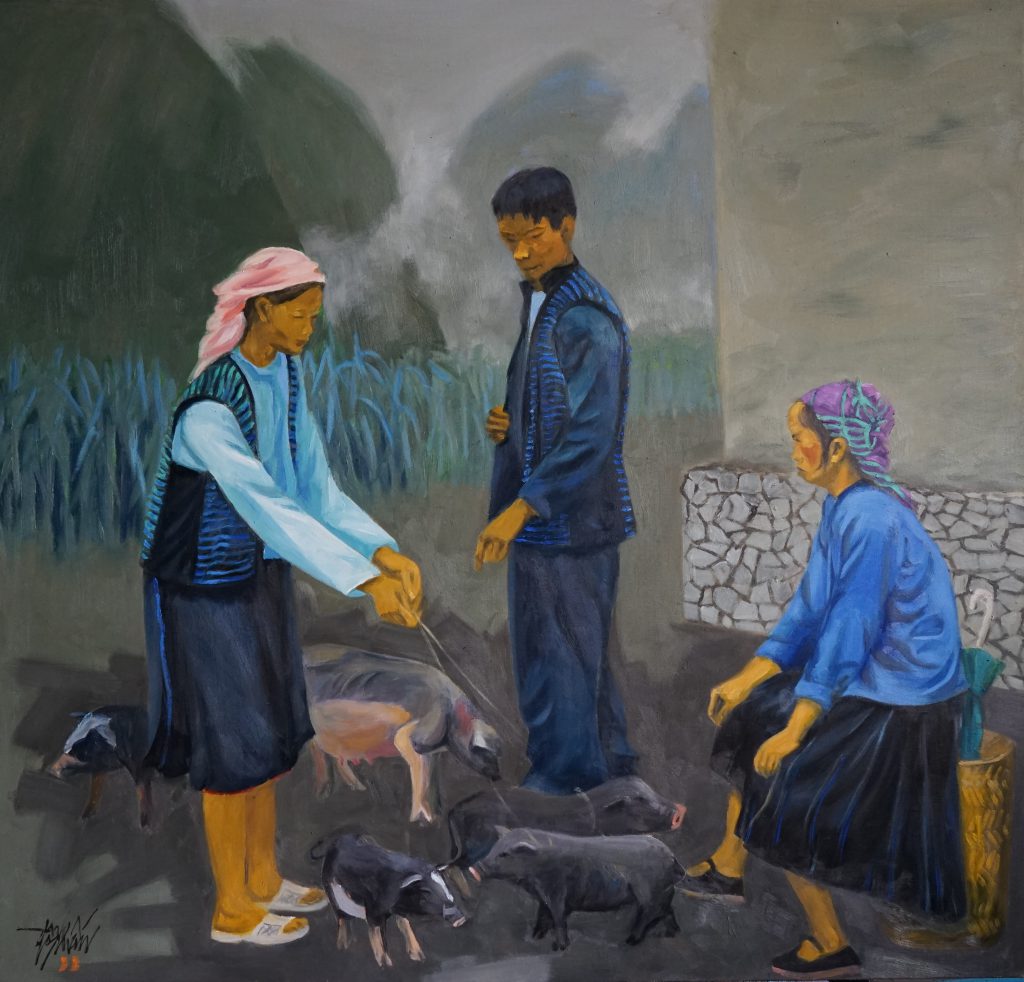Do Phan
Vietnam’s rural markets have inspired generations of artists.
Holding a market is considered one of the earliest forms of communal human activity. Markets probably originated during the hunting and gathering era of human evolution, when prehistoric people began to exchange the results of their hunting and gathering. This notion is supported by archaeological artifacts, such as shell-based currency from primitive times.

Vietnamese history doesn’t specify when markets emerged in this country, but markets are mentioned in legends from very early times. One tale recounts how the mother of Saint Giong returned from the market to discover a giant footprint in a field. When she placed her foot in this print, she fell pregnant and eventually gave birth to Saint Giong. This is just one example of an old folk tale featuring a market.
Rural markets undoubtedly formed even earlier. Some rural markets have expanded and transformed into entire cities, with Hanoi being a prime example. This city was known in ancient times as Ke Cho, meaning “the place of the market”. Rural markets are not merely places for buying, selling, and bartering. They also serve as a community hub and fill people’s needs for socializing, and even matchmaking. One old verse from the lowlands goes: “Chợ huyện một tháng sáu phiên/ Gặp cô hàng xén kết duyên châu trần”. This translates as: “The district market has six sessions a month/Meeting the pretty peddler to tie the marital knot”. In the highlands, there are many “Love Markets”, where couples of all ages come to meet and date. The term “Love Market” was coined by people from the lowlands.

Artists at Vietnam’s first fine arts university depicted the vibrant life at rural markets. At the start of the last century, artists from the Indochina School of Fine Arts recognized the picturesque beauty of rural markets. Over the past century, generations of Vietnamese artists have captured countless scenes of local markets. Some are sketches, while others are labor-intensive works with academic arrangements and harmonious colors. In fact, the French tutors at the Indochina School of Fine Arts were pioneers in recording the beauty of Vietnamese rural markets. Today, we can still appreciate early 20th century depictions of Vietnam’s rural markets by artists like V.Tardieu, J.Inguimberti, and A. Ayme. Naturally, students from those first fine arts courses also created distinctive depictions of rural markets. Notable artists of this era include Nguyen Phan Chanh, Pham Hau, Le Pho, Mai Trung Thu, To Ngoc Van, and Tran Van Can.
Rural markets in Vietnam are found everywhere. Wherever there are villages and residents, there are markets. At the very least, a few villages will share a market. More often, each village has its own market. On a larger scale, there are district markets, and even larger provincial markets. Markets convene based on the geographical characteristics of each region. In riverine areas, markets are organized on the water, using boats. Along the riverbanks, markets trade goods transported by waterways. In the highlands, markets are held on hills and mountains.

From early times, rural markets in the lowlands have been neatly organized by product category, to avoid conflict and disorder. Goods are divided into different areas, which not only helps customers remember where to find what they need, but also ensures cleanliness and order. Live animals such as chickens, ducks, fish, shrimp, and piglets are usually sold in an unroofed, spacious area at the back of the market. Next come the stalls selling vegetables and fruit. Food and beverage stalls are typically placed under a covered area in the middle of the market. A separate area far from these sections is reserved for industrial goods, such as clothes, fabrics, pots, pans, knives, and chopping boards. The market entrance often features red-hot forges that operate throughout the market session. Here, people buy iron-forged farming tools, or simply have their broken tools repaired. Nearby lies the grain section: rice, corn, potatoes, cassava, beans, peanuts, sesame seeds, and items processed from these staples like rice noodles, glass noodles, rice paper, etc.
Artists depicting lowland markets can choose diverse imagery for their works. Sometimes, they might capture an exchange involving a specific item. At other times, they provide a panoramic view of a corner of the market, featuring distinctive goods. An even broader perspective would be a scene of the entire market, brimming with tents, goods, and customers jostling each other. The world of colors and images at these markets is incredibly diverse, providing ample inspiration for crafting artwork.
Mountain markets possess distinctive and intriguing features. The most remarkable aspect for any artist is the opportunity to feast their eyes on the vibrant palette of colors in some ethnic minority people’s clothing. The unique daily activities of mountainous people are most richly displayed at these markets. Here, one also encounters tools that are specific to local inhabitants. The buffalo-pulled plow and lime-based harrow, obsolete in the lowlands for over half a century, remain in use. There are bamboo-toothed harrows for tilling terraced fields. Highland markets also feature special food stalls. Huge steaming pots of Thang Co (a traditional horse meat dish) may be seen amidst faces flushed with alcohol, laughing heartily. Plastic cans of corn wine are lined up in long rows along roads leading to the market. Buyers always sample a bowl before paying. The horse-tying area is essentially the “parking lot” for ethnic minority marketgoers. In the morning, they unload bundles of firewood and baskets of corn from their horses. In the afternoon, wives and daughters hoist their drunken husbands and fathers onto horseback for the journey home.
Many artists are captivated by Vietnam’s ethnic minority people. Their unique hairstyles, head-shavings, and hair-tying methods, along with jewelry specific to each group, are long-standing subjects of study for many working in the creative arts.
A market is not just a marketplace; it has become a repository of the unique cultural traits found in various regions.










